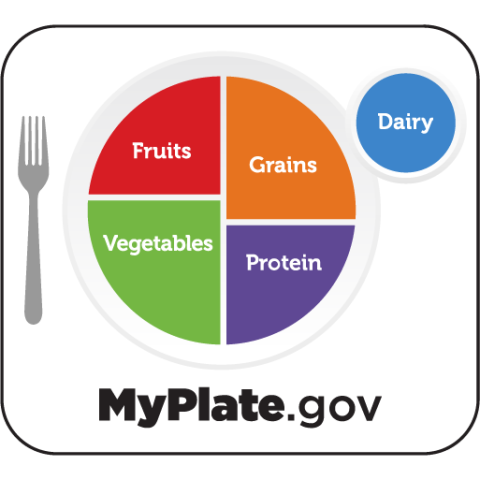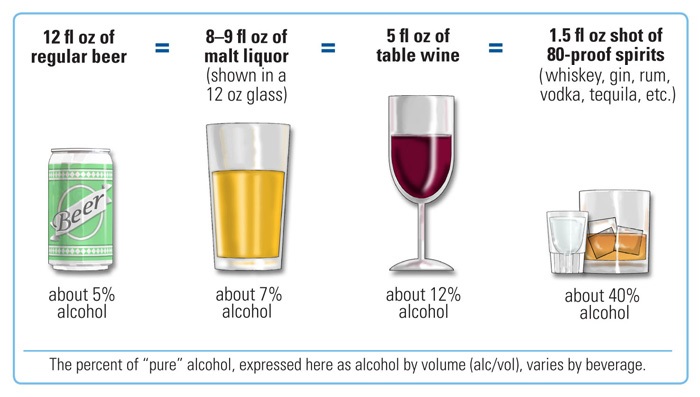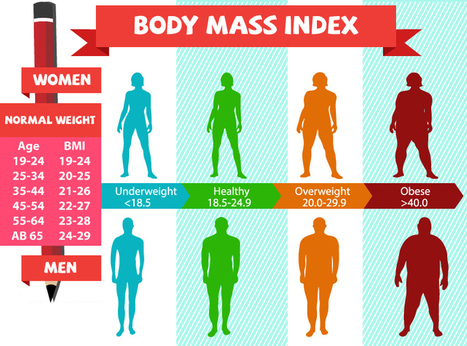2.3 Primary Prevention: Teaching Elements of a Healthy Lifestyle
As discussed in the previous section, primary prevention refers to interventions to prevent illness and injury that are implemented before health disorders develop. Nurses provide primary prevention by performing health teaching and encouraging clients to adopt a healthy lifestyle to reduce risk for disease or injury. They also encourage clients to receive vaccinations to prevent disease.
Clients can significantly reduce their risk factors for disease and injury by making healthy lifestyle choices. Health teaching is key for helping clients understand the impact of unhealthy choices and developing a plan for incorporating healthy behaviors into their daily lives. As direct caregivers, nurses have a unique opportunity to establish a rapport with clients, provide health teaching, and positively influence clients to incorporate healthy lifestyle choices and behaviors. The following subsections provide an overview of healthy lifestyle choices and behaviors and discuss how the nurse can support clients in incorporating these behaviors.
Smoking and E-Cigarette Cessation
According to the CDC, tobacco use has been identified as the leading cause of preventable disease in the United States.[1] Clients must be taught that no amount of tobacco is safe, and no method of tobacco use is safe. See Figure 2.2[2] for a poster about smoking cessation.

Tobacco contains nicotine, a highly addictive substance that is especially dangerous for adolescents as it is known to damage the developing brain. There is a common misconception that e-cigarettes, also known as vaping, is safer than smoking. The use of e-cigarettes has skyrocketed in recent years, especially among adolescents. According to the CDC, 99% of e-cigarettes contain nicotine. Adolescents who ingest nicotine through vaping are more likely to smoke cigarettes as adults and are at increased risk for developing addiction to other drugs.[3] They are also at risk for mood disorders and lowering of impulse control. In addition to nicotine, e-cigarettes may contain ingredients that may cause serious lung disease such as volatile organic compounds and heavy metals such as nickel, tin, and lead.[4]
Nurses can educate and support clients to quit the use of tobacco or e-cigarettes by connecting them with cessation resources, such as 1-800-QUIT-NOW, which links clients to free smoking cessation services in their state.
Healthy Diet
Unhealthy eating habits are a risk factor for the development of diseases such as diabetes, stroke, heart disease, and some cancers. The CDC reports that only 10% of adults in the U.S. eat the daily recommended amounts of fruits and vegetables, and 90% have diets high in sodium. Additionally, only 50% of adults get the recommended amount of physical activity, and nearly 75% are overweight or obese.[5] Nurses provide health teaching on nutritious diet choices and can also share community resources for accessing healthy foods locally. See Figure 2.3[6] for an image of healthy diet choices according to MyPlate guidelines from the U.S. Department of Agriculture.

Read additional information on teaching about nutrition in the “Healthy Diet” chapter.
Physical Activity
Regular physical activity can help clients manage their weight, improve their cardiovascular health, and reduce risk for developing chronic disease. The CDC recommends adults get 150 minutes of moderate-intensity physical activity and two sessions of muscle strengthening activity every week.[7]
Clients with chronic diseases should talk with their health care provider before starting an exercise regimen. Nurses can help clients create a plan to integrate physical activity into their daily lives. In addition to teaching clients about the CDC’s physical activity recommendations, nurses can also help clients understand that exercise in small chunks is effective. For example, when first starting an exercise plan, it may feel less overwhelming for clients to incorporate three 10-minute chunks of exercise every day, rather than trying to plan one 30-minute session.[8]
Guidelines for Safe Physical Activity
Guidelines for safe physical activity include the following:
- Align physical activities with current fitness levels
- Increase activity gradually to meet recommendations
- Use protective equipment like helmets
- Consult with the health care provider regarding physical activity if diagnosed with chronic disease
Considerations for Physical Activity Across the Life Span
The U.S. Department of Health and Human Services published The Physical Activity Guidelines for Americans with the following recommendations for physical activity based on the individual’s developmental level[9]:
- Preschoolers: Physical activity is important for normal growth and development, and early childhood is an important time to develop this healthy habit. Children aged 3-5 should be active throughout the day, with at least an hour of energetic play. Ideally, children should have three hours of exercise such as throwing, riding bikes, hopping, and tumbling. Preschoolers should not remain sedentary for no more than 60 minutes at a time, except when sleeping.
- School-aged Youth: School-aged children should get a minimum of 60 minutes a day of enjoyable, age-appropriate activity and include aerobic, muscle-strengthening, and bone-strengthening activities. Bone-strengthening exercises (i.e., running, rope jumping, basketball) are particularly important for children and young adolescents as peak bone mass is achieved by the end of adolescence.
-
- Children and Adolescents With Disabilities: Children with disabilities tend to be more inactive than their peers without disabilities. A health care provider or physical therapist can help determine activities that are appropriate and safe for children based on their needs and abilities.
- Adults: Adults should achieve a minimum of 150 minutes of moderate-intensity exercise per week. Moderate-intensity activities include options such as brisk walking, tennis, water aerobics, and line dancing. Those who engage in more than 300 minutes of exercise each week see additional health benefits. It is important for adults to also include at least two days a week of muscle-strengthening activities, such as weightlifting and yoga, which protect joints and muscles from injury, improves balance, and assists in weight management.
-
- Pregnancy and Postpartum: Regular physical activity is important to a healthy pregnancy as it improves cardiorespiratory health, prevents excessive weight gain, reduces the risk for gestational diabetes, and decreases the risk for postpartum depression. Pregnant women should aim for the same goal of 150 minutes of moderate-intensity activity a week as they did prior to pregnancy. Women who consistently engaged in vigorous activity prior to pregnancy can continue to do so under the direction of their health care provider.
- Older Adults: In addition to 150 minutes of moderate-intensity exercise plus muscle-strengthening activities each week, older adults should also participate in activities that support balance. Clients with chronic disease need to understand how their diseases may impact their ability to safely engage in physical activity and should engage in activity to the extent their abilities and conditions allow.
Alcohol and Substance Use
Substance misuse is defined as the use of alcohol or drugs in a manner, situation, amount, or frequency that could cause harm to the user or to those around them. Misuse can be of low severity and temporary, but it can increase the risk for serious and costly consequences such as motor vehicle crashes; overdose death; suicide; various types of cancer; heart, liver, and pancreatic diseases; sexually transmitted infections; HIV/AIDS; and unintended pregnancies. Substance use during pregnancy can cause complications for the baby such as fetal alcohol spectrum disorders (FASDs) or neonatal abstinence syndrome (NAS). Substance misuse is also associated with intimate partner violence, child abuse, and neglect.[10] If a nurse suspects a client is misusing alcohol or substances, the health care provider should be notified and referrals made to specialists for further assessment and treatment.
Alcohol is the most common substance that Americans use. The CDC defines moderate alcohol consumption as limiting intake to two or fewer drinks a day for men and one or fewer a day for women. A standard drink is equivalent to 12 ounces of beer, a 5-ounce glass or wine, or 1.5 ounces of liquor.[11] View Figure 2.4[12] for an illustration of a standard drink from the National Institutes of Health.

Read more information in the “Substance Use Disorders” chapter in Open RN Nursing: Mental Health & Community Concepts.
Healthy Weight
Obesity is a modifiable risk factor for many chronic diseases such as hypertension, diabetes, heart disease, respiratory problems, and certain cancers.[13] Clients who are overweight or obese should receive health teaching and support in their efforts to reach and maintain a healthy weight.
A well-balanced, healthy diet and regular physical activity are crucial to achieving and maintaining a healthy weight. Balancing energy is important for maintaining a healthy weight. Energy in (i.e., calories received from eating and drinking) should be balanced with energy out (i.e., calories the body uses for functions such as breathing, digesting, and physical activity).
Body mass index (BMI) is the most commonly used assessment of a person’s weight. It is calculated using a formula and the client’s weight and height. There are many online BMI calculators that can be used to calculate BMI.
View the CDC’s BMI calculator: Adult BMI Calculator.
A person’s BMI is compared to the following reference ranges to assess their weight status[14]:
- Underweight: Less than 18.5
- Normal: 18.5 – 24.9
- Overweight: 25.0 – 29.9
- Obese: 30.0 – 34.9
- Extremely Obese: 35 and over
See Figure 2.5[15] for an illustration of BMI.

Although BMI is a commonly used screening tool, it does not take into account all factors that may affect one’s weight, such as genetics, family history, or metabolism. For example, athletes may have a high BMI because of increased muscularity rather than increased body fat. Additional tests such as diet analysis, skinfold measurements, and activity level are used to diagnose obesity and the risk for developing weight-related diseases.
Mental Health and Emotional Well-Being
According to the CDC, more than 20% of adults and adolescents in the United States have experienced or are currently living with a mental health disorder.[16] Mental health is as important to overall health as one’s physical health. Nurses must be familiar with the many factors that can contribute to an increased risk for mental illness, including adverse childhood experiences (ACE), chronic medical conditions, biological factors, substance use disorders, isolation, and loneliness. See Figure 2.6[17] for an illustration on mental health.

Read more information about adverse childhood experiences in the “Adverse Childhood Experiences” section of the “Trauma, Abuse, and Violence” chapter of Open RN Nursing: Mental Health & Community Concepts.
Mental health impacts how a person copes with stress and how they relate to others. A person’s physical health can be negatively impacted by their mental health and vice versa. For example, depression increases the risk for diseases such as diabetes and heart disease. Likewise, chronic diseases increase the risk for developing mental health conditions.
Effectively managing stress is critical for optimal mental health and emotional well-being. The CDC outlines several healthy ways to cope with stress[18]:
- Take a break from watching or listening to the news
- Stay physically active
- Eat a healthy diet
- Get adequate sleep
- Limit intake of alcohol
- Avoid illegal drugs
- Don’t smoke or use tobacco or other nicotine products
- Enjoy relaxing activities (deep breathing, mediation, stretching)
- Socially engage with others
Sleep
Getting adequate amounts of quality sleep is crucial to your health, as not doing so can negatively impact thinking, memory, mood, cardiovascular health, metabolism, hormones, the respiratory system, and immunity. The National Heart, Lung, and Blood Institute (NHLBI) explains that people who do not get adequate sleep are at risk for obesity, stroke, hypertension, and coronary artery disease. They recommend that adults get between seven and nine hours of sleep.[19]
Additionally, the following amounts of sleep are recommended across the life span[20]:
- Newborns younger than 4 months: Sleep patterns vary widely
- Infants (4 months to 1 year): 12 to 16 hours per day
- Children aged 1 to 2 years: 11 to 14 hours per day
- Children aged 3 to 5 years: 10 to 13 hours per day
- Children aged 6 to 12 years: 9 to 12 hours per day
- Teens (aged 13 to 18 years): 8 to 10 hours per day
Sleep hygiene refers to healthy habits that support good sleep. Nurses encourage clients to integrate the following healthy habits to improve the amount and quality of their sleep[21]:
- Maintain a consistent bedtime and waketime
- Create a comfortable sleep environment (quiet, dark, and cool temperature)
- Remove electronics from the sleeping space (i.e., phones, TVs, computers)
- Avoid eating a large meal or drinking caffeine or alcohol before bedtime
- Be physically active throughout the day
Vaccinations
Teaching clients about the benefits and risks of vaccination is another example of primary prevention to promote health and reduce risk for disease. Nurses must understand the different types of vaccinations and the current vaccination schedules. Current guidelines and recommended vaccination schedules can be accessed on the CDC web page in the following box.
View the most current vaccination guidelines on the CDC web page: Vaccines and Immunizations.[22]
Infants and Children
Vaccinations in early childhood help protect infants and children against a variety of diseases. Vaccinations provide extra immunity needed to fight infections as they are exposed to a variety of germs throughout the day as they breathe, eat, and play. Read more information about recommended vaccines for infants, children, and adolescents in the “Nursing and Medical Care for the Developing Child” section of the “Nursing Care for Infancy Through Adolescence” chapter.
Adults
The CDC recommendations for adult vaccines are complex and based on their age, evidence of immunity, risk factors, and documentation of vaccination. Recommendations are as follows[23]:
- Annual vaccines for COVID 19 and influenza
- Booster vaccines every ten years for tetanus and diphtheria (TD) OR tetanus, diphtheria, and pertussis (Tdap)
- Older adults should be vaccinated against shingles (Zoster), pneumonia, and Respiratory Syncytial Virus (RSV)
The shingles vaccine is unique for adults. Both shingles and chickenpox are caused by the varicella-zoster virus. Most children are vaccinated for varicella, and more than 99% of adults born before 1980 have had chickenpox. However, the virus remains dormant in the body and can reactivate years later in a disease called shingles. Shingles is a painful rash that usually develops on one side of the body, often the face or torso. The rash consists of blisters that typically scab over in seven to ten days and clears up within two to four weeks. Some people describe the pain as an intense burning sensation, referred to as post-herpetic neuralgia. The shingles vaccine is the only way to prevent shingles and post-herpetic neuralgia.[24]
Read current information about recommended vaccines for adults aged 18 years and older on the CDC web page: Adult Immunization Schedule by Age.[25]
Read instructions about each vaccine on the CDC’s Vaccine Information Statements, which include information about each disease, who should be vaccinated, contraindications, risks, and reactions: Current VISs web page.
- Centers for Disease Control and Prevention. (2023). Quick facts on the risks of e-cigarettes for kids, teens, and young adults. https://www.cdc.gov/ ↵
- “4865993593_1937b7a277_o.jpg” by StephenMitchell is licensed under CC BY-NC-ND 2.0 ↵
- Centers for Disease Control and Prevention. (2023). Quick facts on the risks of e-cigarettes for kids, teens, and young adults. https://www.cdc.gov/ ↵
- U.S. Department of Health and Human Services. (n.d.). Know the risks. https://e-cigarettes.surgeongeneral.gov/knowtherisks.html#risks ↵
- Centers for Disease Control and Prevention. (2022). Promoting health for adults. https://www.cdc.gov/ ↵
- “icon-myplate-logo-white--512.png” by USDA is licensed under CC0 ↵
- U.S. Department of Health and Human Services. (2018). Physical activity guidelines for Americans (2nd ed.). [PDF]. https://health.gov/sites/default/files/2019-09/Physical_Activity_Guidelines_2nd_edition.pdf ↵
- U.S. Department of Health and Human Services. (2018). Physical activity guidelines for Americans (2nd ed.). [PDF]. https://health.gov/sites/default/files/2019-09/Physical_Activity_Guidelines_2nd_edition.pdf ↵
- U.S. Department of Health and Human Services. (2018). Physical activity guidelines for Americans (2nd ed.). [PDF]. https://health.gov/sites/default/files/2019-09/Physical_Activity_Guidelines_2nd_edition.pdf ↵
- Substance Abuse and Mental Health Services Administration, & Office of the Surgeon General. (2016). Facing addiction in America: The surgeon general's report on alcohol, drugs, and health. U.S. Department of Health and Human Services. https://www.ncbi.nlm.nih.gov/books/NBK424857/ ↵
- Centers for Disease Control and Prevention. (2022). Alcohol and public use. https://www.cdc.gov/alcohol/index.htm ↵
- “NIH_standard_drink_comparison.jpg” by National Institutes of Health is in the Public Domain ↵
- National Heart, Lung, and Blood Institute. (n.d.). Why is a healthy weight important? National Institutes of Health. https://www.nhlbi.nih.gov/health/educational/lose_wt/index.htm ↵
- National Heart, Lung, and Blood Institute. (n.d.). Why is a healthy weight important? National Institutes of Health. https://www.nhlbi.nih.gov/health/educational/lose_wt/index.htm ↵
- “Body Mass Index” by DrV-Amar is licensed by CC BY-SA 4.0 ↵
- Centers for Disease Control and Prevention. (2023). About mental health. https://www.cdc.gov/ ↵
- This image is a derivative of “1000w_q95.jpg” by Pfc. Kelcey Seymour, via Marine Corps Installations Pacific and is in the Public Domain. “The appearance of U.S. Department of Defense (DoD) visual information does not imply or constitute DoD endorsement.” ↵
- Centers for Disease Control and Prevention. (2023). Coping with stress. https://www.cdc.gov/ ↵
- National Heart, Lung, and Blood Institute. (2022). Why is sleep important? National Institutes of Health. https://www.nhlbi.nih.gov/health/sleep/why-sleep-important ↵
- National Heart, Lung, and Blood Institute. (2022). How much sleep is enough? National Institutes of Health. https://www.nhlbi.nih.gov/health/sleep/how-much-sleep ↵
- National Heart, Lung, and Blood Institute. (2022). Why is sleep important? National Institutes of Health. https://www.nhlbi.nih.gov/health/sleep/why-sleep-important ↵
- Centers for Disease Control and Prevention. (2016). Recommended vaccines by age. https://www.cdc.gov/vaccines/by-age/ ↵
- Centers for Disease Control and Prevention. (2023). Adult immunization schedule by age. https://www.cdc.gov/ ↵
- Centers for Disease Control and Prevention. (2023). Shingles vaccination. https://www.cdc.gov/shingles/vaccines/ ↵
- Centers for Disease Control and Prevention. (2023). Adult immunization schedule by age. https://www.cdc.gov/ ↵
Preventing illness and injury.
The use of alcohol or drugs in a manner, situation, amount, or frequency that could cause harm to the user or to those around them.
Limiting intake to two or fewer drinks a day for men and one or fewer a day for women.
12 ounces of beer, a 5-ounce glass or wine, or 1.5 ounces of liquor.
The most commonly used assessment of a person’s weight.
Healthy habits that support good sleep.
A painful rash that usually develops on one side of the body, often the face or torso.

